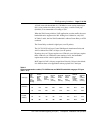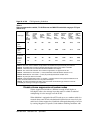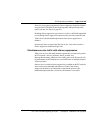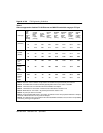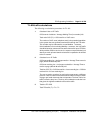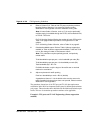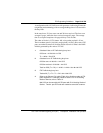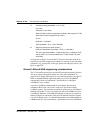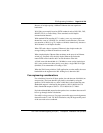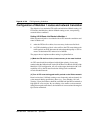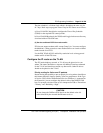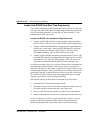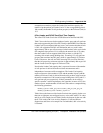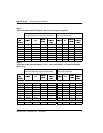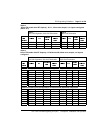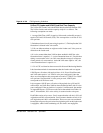
ITG Engineering Guidelines Page 85 of
378
ITG Trunk 2.0 ISDN Signaling Link (ISL) Description, Installation and Operation
Because of its high capacity, 100BaseT Ethernet does not experience
bottlenecks.
WAN links are normally based on PSTN standards such as DS0, DS1, DS3,
SONET STS-3c, or Frame Relay. These standards are full-duplex
communication channels
With standard PCM encoding (G.711 codec), a two-way conversation
channel has a rate of 128 kbit/s (i.e., 64 kbit/s in each direction). The same
conversation on WAN (e.g, T1) requires a 64 kbit/s channel only, because a
WAN channel is a full duplex channel.
When ITG cards share a segment of Ethernet in the simplex mode, the
average loading on Ethernet should not exceed 30%.
When simplex/duplex Ethernet links terminate on the ports of an Ethernet
switch (e.g., Baystack 450), the fully duplex Ethernet up-link to the
router/WAN can be loaded to 60% on each direction of the link.
A WAN route with bandwidth of 1.536 Mbit/s or more can be loaded up to
80% (voice packets must have priority over data), a single DS0 WAN pipe
(64 kbit/s) is recommended to a loading of 50%.
When the WAN route prioritizes VoIP application over data traffic, the route
bandwidth can be engineered to 90% loading level, otherwise 80%.
Fax engineering considerations
Fax calculation is based on 30 bytes packet size and data rate of 64 kbit/s (no
compression). The frame duration (payload) is calculated by using the
equation: 30*8/14400=16.6 ms, where 14,400 bit/s is the modem data rate.
Bandwidth output is calculated by the equation: 108*8*1000/16.6=52.0
kbit/s. Bandwidth output to WAN is: 70*8*1000/16.6=33.7 kbit/s.
Payload and bandwidth output for other packet sizes or modem data rates will
have to go through similar calculations.
Fax traffic is always one-way. Fax pages sent and fax pages received generate
data traffic to the T-LAN. For WAN calculation, only the larger traffic parcel
of the two needs to be considered.



